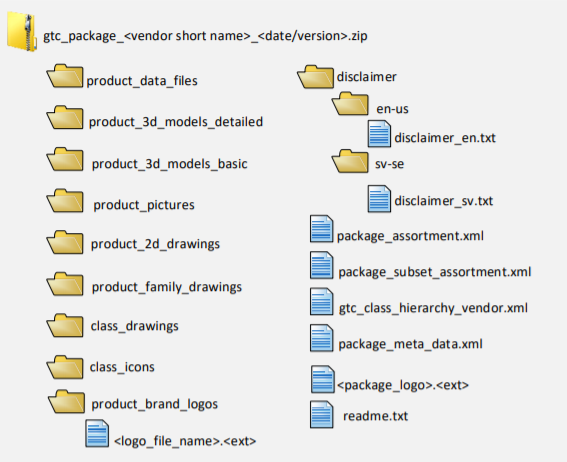Export GTC package
Communicating item data among item vendors and systems has always been quite a challenge. The introduction of the ISO 13399 standard has helped the communication process. To simplify the item-data communication, even more, Sandvik Coromant and Siemens PLM have developed a Generic Tool Catalog (GTC) as a complement to ISO 13399.
GTC is a vendor-neutral format for cutting-tool digital catalogue exchange. Item vendors can use the GTC format to rationalize their data exchange process and ensure excellent communication quality. The GTC format definition consists of two main parts, the GTC hierarchy and the GTC package:
GTC package description
A 'GTC package' is a compressed file in ZIP format containing item data. It enables you to exchange one or more items or assemblies between independent item data management systems supporting this format. It includes all the information required to describe fully an item or several items based on ISO13399. Among others, graphic files in various formats and the corresponding parameter values.

GTC hierarchy
Sending and receiving item data has always demanded a lot of manual work. It often includes reading from paper catalogues and manually putting item data into tool libraries. Companies often use their in-house standards for data description and management. In addition, different organizations use different systems, which further complicates the process. The basic difficulty is the absence of standardized structures and definitions. As a result, manual data management is both cost- and time ineffective. It requires a lot of manual work. It also limits communication between vendors and users. Furthermore, manual data handling always comes with the risk of human error.
ISO 13399, a new generic standard for the description of cutting tools, is a first step in addressing these issues. Its dictionary with classes and properties for describing cutting tools eliminates previous difficulties regarding product description. However, ISO 13399 has no hierarchical classification structure that indicates what kind of cutting-tool component a particular product is. To find and use the right items cost-efficiently, the ISO 13399 standards need to be combined with a classification hierarchy for cutting tools. The classification hierarchy should be generic and brand-neutral while enabling vendor-specific classes.


